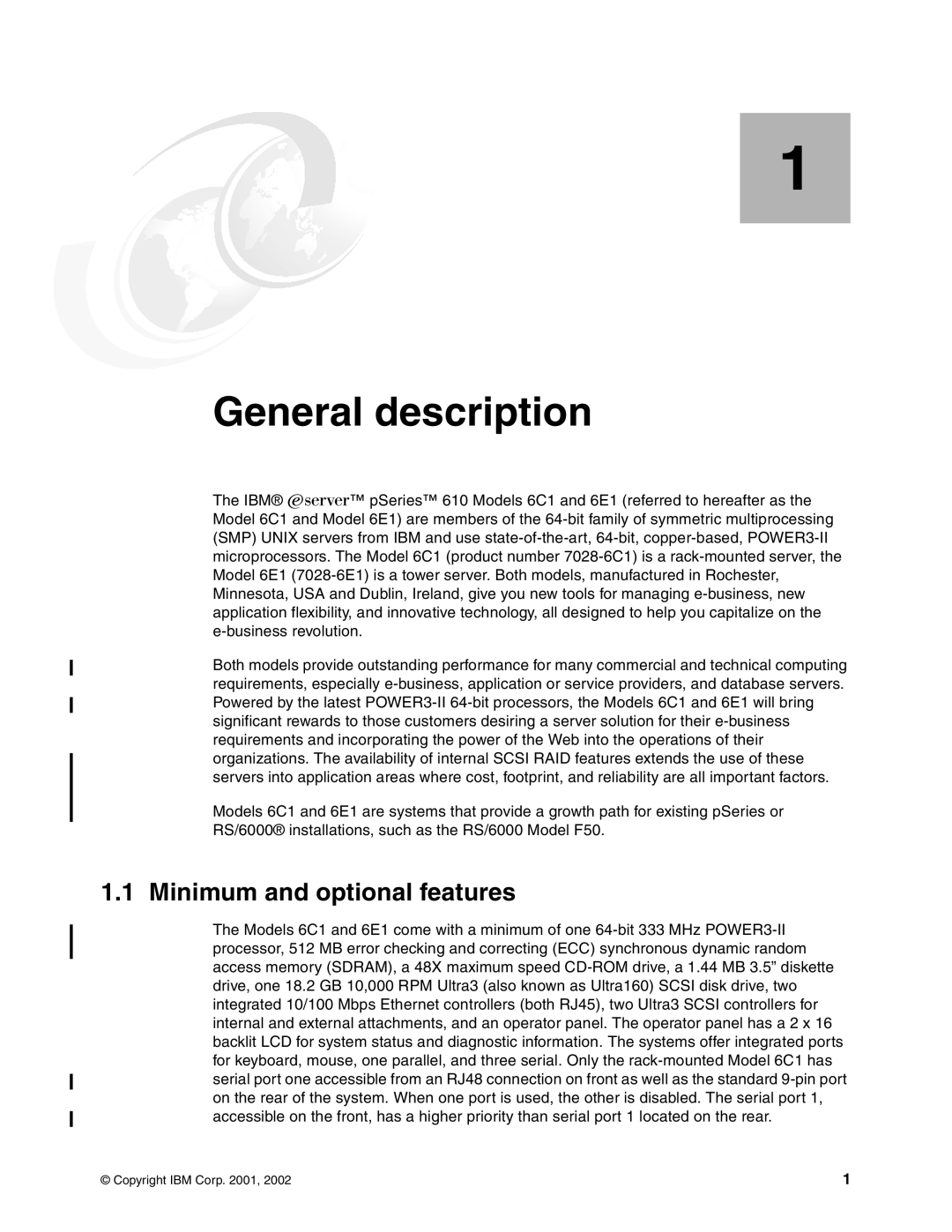1
Chapter 1. General description
The IBM® ^™ pSeries™ 610 Models 6C1 and 6E1 (referred to hereafter as the Model 6C1 and Model 6E1) are members of the 64-bit family of symmetric multiprocessing (SMP) UNIX servers from IBM and use state-of-the-art, 64-bit, copper-based, POWER3-II microprocessors. The Model 6C1 (product number 7028-6C1) is a rack-mounted server, the Model 6E1 (7028-6E1) is a tower server. Both models, manufactured in Rochester, Minnesota, USA and Dublin, Ireland, give you new tools for managing e-business, new application flexibility, and innovative technology, all designed to help you capitalize on the e-business revolution.
Both models provide outstanding performance for many commercial and technical computing requirements, especially e-business, application or service providers, and database servers. Powered by the latest POWER3-II 64-bit processors, the Models 6C1 and 6E1 will bring significant rewards to those customers desiring a server solution for their e-business requirements and incorporating the power of the Web into the operations of their organizations. The availability of internal SCSI RAID features extends the use of these servers into application areas where cost, footprint, and reliability are all important factors.
Models 6C1 and 6E1 are systems that provide a growth path for existing pSeries or RS/6000® installations, such as the RS/6000 Model F50.
1.1 Minimum and optional features
The Models 6C1 and 6E1 come with a minimum of one 64-bit 333 MHz POWER3-II processor, 512 MB error checking and correcting (ECC) synchronous dynamic random access memory (SDRAM), a 48X maximum speed CD-ROM drive, a 1.44 MB 3.5” diskette drive, one 18.2 GB 10,000 RPM Ultra3 (also known as Ultra160) SCSI disk drive, two integrated 10/100 Mbps Ethernet controllers (both RJ45), two Ultra3 SCSI controllers for internal and external attachments, and an operator panel. The operator panel has a 2 x 16 backlit LCD for system status and diagnostic information. The systems offer integrated ports for keyboard, mouse, one parallel, and three serial. Only the rack-mounted Model 6C1 has serial port one accessible from an RJ48 connection on front as well as the standard 9-pin port on the rear of the system. When one port is used, the other is disabled. The serial port 1, accessible on the front, has a higher priority than serial port 1 located on the rear.

